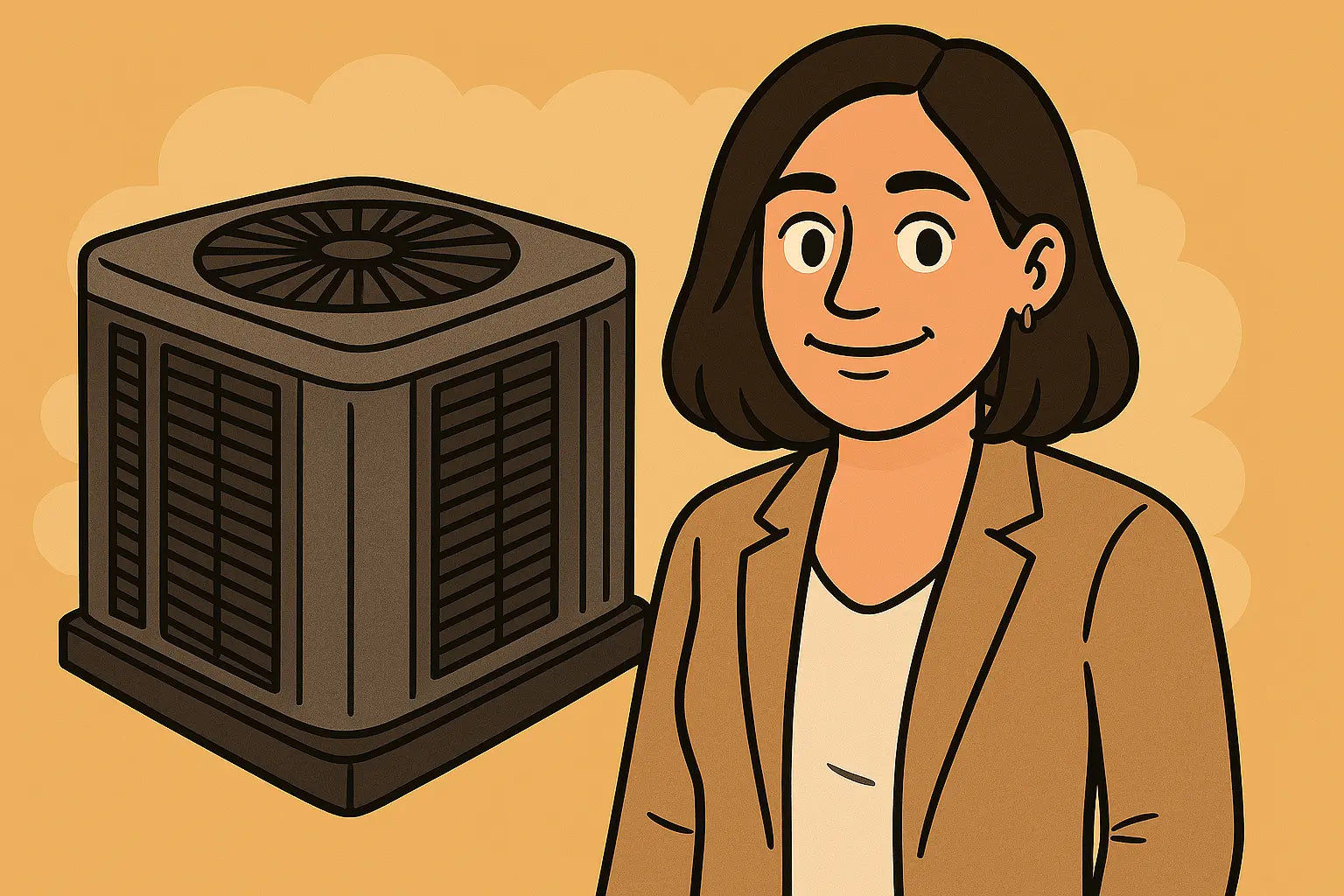“Why Is My AC So Loud?” (And Why the GLXS4BA3610 Isn’t)
If you’ve ever had an air conditioner that kicks on like a jet engine, you know the frustration: rattling windows, disturbed sleep, and the feeling that your backyard oasis just turned into a construction zone.
Thankfully, the Goodman GLXS4BA3610 is built to sidestep all that noise. This unit is part of a newer generation of R-32 refrigerant-based systems that aren’t just more efficient—they’re engineered for low-noise operation from the ground up.
But let’s dig into the real-world decibels—and what you can expect when this unit is running at full tilt.
How Quiet Is the GLXS4BA3610, Really?
The GLXS4BA3610 typically runs between 70 to 76 dB(A) under load. For comparison:
-
70 dB(A) is about as loud as a vacuum cleaner in another room.
-
76 dB(A) is like light traffic outside your window.
Now compare that to older systems that ran in the 80s or even 90s on the decibel scale. That’s a major reduction in operating noise—especially for a 3-ton, 15.2 SEER2-rated system.
Still, decibels don’t tell the whole story. Let’s talk about what Goodman did to make this unit run more quietly.
Design Choices That Cut the Noise
Here’s how Goodman engineered the GLXS4BA3610 to hush things up:
1. Compressor Sound Blanket
The unit features a factory-installed sound blanket around the scroll compressor. This insulates and absorbs vibrations—the number-one culprit for low-frequency hum.
2. R-32 Refrigerant
Because R-32 operates at slightly lower pressure than older refrigerants like R-410A, it creates less mechanical strain on system parts—especially the compressor and expansion valve. Less strain = less noise.
For more on why R-32 matters, read this ASHRAE technical overview of R-32 refrigerant.
3. Aerodynamic Fan Design
The condenser fan blades are angled and balanced to reduce air turbulence. This makes the unit more efficient and quieter, especially on high-speed cycles during extreme heat.
4. Rubber Isolation Mounts
These reduce vibration transmission to the base pan and cabinet—so the whole structure doesn’t become a speaker cone.
How to Make Your GLXS4BA3610 Run Even Quieter
Even with Goodman’s quiet tech, there’s more you can do to eliminate unwanted noise:
✅ Install It on a Level, Solid Pad
Avoid wood or hollow blocks—those amplify vibrations. Use a concrete or composite base.
✅ Add a Sound Barrier
Fencing (at least 2 feet away) or landscaping with dense shrubs can block and absorb sound waves. Just make sure airflow isn’t restricted.
Check out this practical guide to outdoor AC noise control from HVAC.com.
✅ Schedule Regular Maintenance
Clogged coils and worn-out fan motors make systems louder. Keep your unit in peak shape with seasonal tune-ups. This Energy.gov maintenance checklist is a great start.
When to Be Concerned About Noise
While the GLXS4BA3610 is quiet by design, if you start hearing:
-
Buzzing: Might mean loose wiring or a capacitor going bad
-
Rattling: Could be a loose fan blade or screw
-
Hissing: May be refrigerant escaping—call a tech right away
Don’t ignore new noises—they’re usually early warnings that something needs tightening, replacing, or cleaning.
If you’re not sure what you’re hearing, this AC sound diagnosis chart from Spark Plugs is a handy reference.
Should You Upgrade for Quieter Comfort?
If your current outdoor unit is loud enough to wake the neighbors, it might be time to switch to a high-efficiency, low-noise system like the GLXS4BA3610. Pair it with:
-
The CAPTA3626C3 vertical coil, and
-
The GR9T961005CN 96% AFUE natural gas furnace,
And you’ve got a comfort system that runs quietly, saves energy, and lasts for years.
You can find the complete bundle here:
👉 Goodman 3 Ton 15.2 SEER2 System: GLXS4BA3610, CAPTA3626C3, GR9T961005CN
Curious about why these units work well together? Visit my guide: Pairing the CAPTA3626C3 Coil with the GR9T961005CN Furnace.
Final Thoughts from Savvy Mavi
Noise might not be the first thing you think about when shopping for an HVAC system—but once you live with a quiet one, you’ll never go back.
The GLXS4BA3610 may not be totally silent (no system is), but it’s about as close as you’ll get in a 3-ton residential unit. And with a few smart install decisions, you can make it even quieter.
Your ears—and your neighbors—will thank you.
- Savvy Mavi Out!







